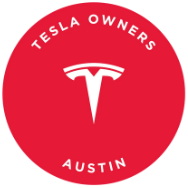Tesla has been gearing up for the launch of its Robotaxi ride-hailing suite for quite some time now, and as the company edges closer to the debut of its first-ever ride-hailing platform next month, more details are beginning to surface.
The Robotaxi suite, along with its accompanying ride-hailing app, has been codenamed ‘Alicorn’ by Tesla. The name ‘Alicorn’ is derived from a mythical creature that combines the attributes of both a unicorn and a pegasus. This choice of name may signify the dual nature of the vehicle, serving as both a personal passenger car and a source of passive income. Elon Musk first hinted at this concept back in April 2019, suggesting that your car could generate between $10,000 and $30,000 annually by operating as a driverless Robotaxi.
The unveiling of ‘Project Alicorn’ sheds light on Tesla’s preparations for the imminent launch of the Robotaxi service in June. The Tesla mobile app has been updated with new features in anticipation of the rollout, indicating that everything related to the Robotaxi will be seamlessly integrated into the main Tesla app used by customers to access their vehicles.
While the initial launch of the Robotaxi platform in Austin next month will involve a small fleet of between 10 and 20 cars, Tesla is optimistic about expanding the service to more cities later this year. The company intends for the majority of the Robotaxi fleet to comprise cars purchased by consumers.
Specific coding within the updated Tesla app suggests that Tesla is getting ready for vehicles to operate without human intervention, with Full Self-Driving technology taking care of the driving. The ability to call the vehicle owner from the app hints at the possibility of owners generating revenue by adding their cars to the Robotaxi platform.
In the long run, Tesla envisions a future where its vehicles operate autonomously as Robotaxis, offering rideshare services to customers without the need for human drivers. This revolutionary approach to ride-hailing could transform the way we perceive transportation and pave the way for a new era of autonomous vehicles.

